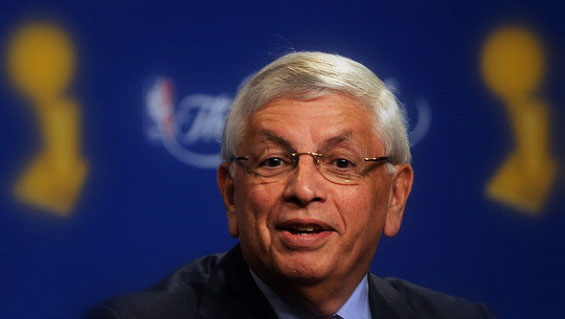Labor relations in basketball
Spring comes early

missioner, deemed the impasse a “nuclear winter” for the league. As such deep freezes go, the 12 days that passed before the two sides announced on November 26th that they had reached a deal to save the 2011-12 season were downright balmy. The details of the new collective-bargaining agreement (CBA) are still being finalized. But an abbreviated 66-game season will start on Christmas Day, and the pact ensures labor peace for at least the next six years.
Compared with the status quo, the new CBA is far more favorable to the owners. Their guaranteed share of the league’s basketball-related income will increase from 43% in 2010-11 to 49% next season, and then move to a range of 49-51%, depending on the league’s overall revenues. The maximum individual contract length will be shortened from six years to five. The “luxury tax” imposed on teams that exceed the formal maximum payroll by a given amount will become far more punitive, and a number of exceptions that allow clubs to spend over the cap will be curtailed.
Yet the players extracted some significant concessions that were not included in the November 14th offer. If their share of the league’s income exceeds the agreed-upon limit, the owners cannot reduce their salaries in subsequent years, as the league had previously demanded. The owners also wanted to prevent clubs that pay the luxury tax from using salary-cap loopholes and from receiving players in “sign-and-trade” deals. Sign-and-trades will now continue unfettered for two years, and will subsequently remain available to teams whose payrolls are within $4m of the luxury-tax threshold, as will one frequently used cap exception. The players also got an increase in the minimum team payroll, a higher salary limit for young stars and an increase in the amount of revenue that big-market clubs will share with their rivals in smaller cities—a means of bridging the gap between the league’s haves and have-nots without further reducing salaries.
The parties took just five days to hammer out the agreement, after the lockout was 144 days old. Neither side has said what changed in such a short time. The owners may have decided to give a bit more ground once the players showed they were willing to take their chances with an antitrust suit, even if it meant a prolonged work stoppage. Or they may have felt extra pressure after Major League Baseball announced its new CBA, which was reached without any public acrimony, on November 22nd. In hindsight, the contours of the eventual deal were already evident when Mr. Stern first cancelled games on October 10th. But the loss of a mere 20% of the season falls far short of the pessimistic forecasts made earlier this month. The lockout will probably be all but forgotten by playoff time.
热门推荐:
考研网校哪个好
新东方考研培训班
考研培训班
考研培训机构哪个好
考研英语网络课程
文都考研网校
北京考研培训班

 missioner, deemed the impasse a “nuclear winter” for the league. As such deep freezes go, the 12 days that passed before the two sides announced on November 26th that they had reached a deal to save the 2011-12 season were downright balmy. The details of the new collective-bargaining agreement (CBA) are still being finalized. But an abbreviated 66-game season will start on Christmas Day, and the pact ensures labor peace for at least the next six years.
missioner, deemed the impasse a “nuclear winter” for the league. As such deep freezes go, the 12 days that passed before the two sides announced on November 26th that they had reached a deal to save the 2011-12 season were downright balmy. The details of the new collective-bargaining agreement (CBA) are still being finalized. But an abbreviated 66-game season will start on Christmas Day, and the pact ensures labor peace for at least the next six years.